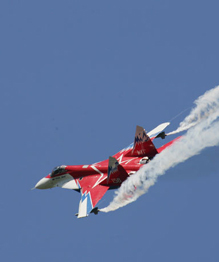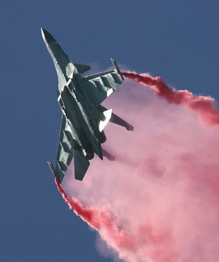A look into deep black space
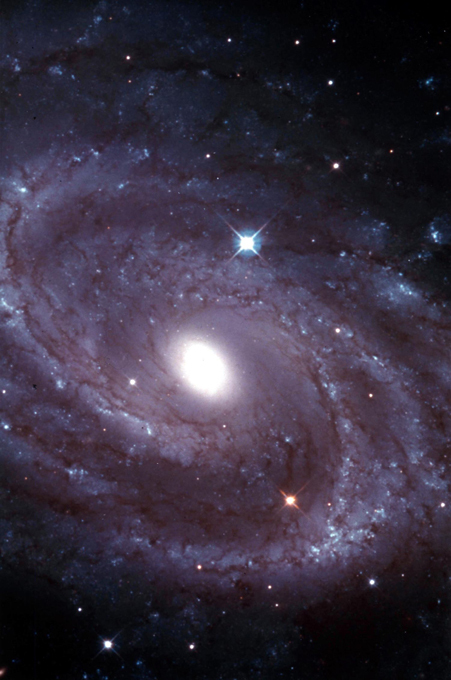
Messier 63 (also known as M63, NGC 5055, or the Sunflower Galaxy) is a spiral galaxy in the constellation Canes Venatici consisting of a central disc surrounded by many short spiral arm segments. M63 is part of the M51 Group, a group of galaxies that also includes M51 (the 'Whirlpool Galaxy'). M63 is an active galaxy with a LINER nucleus
Messier 63 (also known as M63, NGC 5055, or the Sunflower Galaxy) is a spiral galaxy in the constellation Canes Venatici consisting of a central disc surrounded by many short spiral arm segments. M63 is part of the M51 Group, a group of galaxies that also includes M51 (the 'Whirlpool Galaxy'). M63 is an active galaxy with a LINER nucleus

V838 Monocerotis (V838 Mon) is a red variable star in the constellation Monoceros about 20,000 light years (6 kpc) from the Sun. The previously unknown star was observed in early 2002 experiencing a major outburst, and was possibly one of the largest known stars for a short period following the outburst. Originally believed to be a typical nova eruption, it was then realized to be something completely different. The reason for the outburst is still uncertain, but several conjectures have been put forward, including an eruption related to stellar death processes and a merger of a binary star or planets
V838 Monocerotis (V838 Mon) is a red variable star in the constellation Monoceros about 20,000 light years (6 kpc) from the Sun. The previously unknown star was observed in early 2002 experiencing a major outburst, and was possibly one of the largest known stars for a short period following the outburst. Originally believed to be a typical nova eruption, it was then realized to be something completely different. The reason for the outburst is still uncertain, but several conjectures have been put forward, including an eruption related to stellar death processes and a merger of a binary star or planets
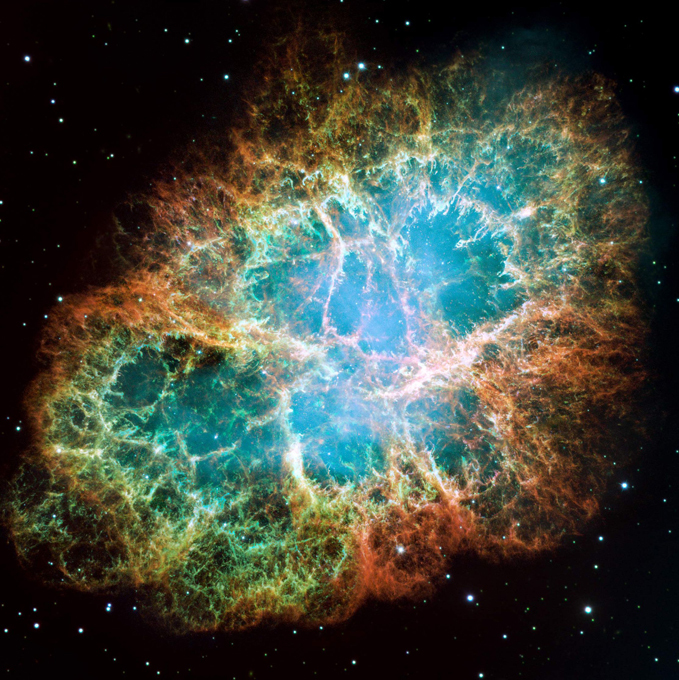
The Crab Nebula (catalogue designations M1, NGC 1952, Taurus A) is a supernova remnant and pulsar wind nebula in the constellation of Taurus. It is not, as its name might suggest, in Cancer. The now-current name is due to William Parsons, 3rd Earl of Rosse, who observed the object in 1840 using a 36-inch telescope and produced a drawing that looked somewhat like a crab.Corresponding to a bright supernova recorded by Chinese astronomers in 1054, the nebula was observed later by English astronomer John Bevis in 1731. The nebula was the first astronomical object identified with a historical supernova explosion
The Crab Nebula (catalogue designations M1, NGC 1952, Taurus A) is a supernova remnant and pulsar wind nebula in the constellation of Taurus. It is not, as its name might suggest, in Cancer. The now-current name is due to William Parsons, 3rd Earl of Rosse, who observed the object in 1840 using a 36-inch telescope and produced a drawing that looked somewhat like a crab.Corresponding to a bright supernova recorded by Chinese astronomers in 1054, the nebula was observed later by English astronomer John Bevis in 1731. The nebula was the first astronomical object identified with a historical supernova explosion
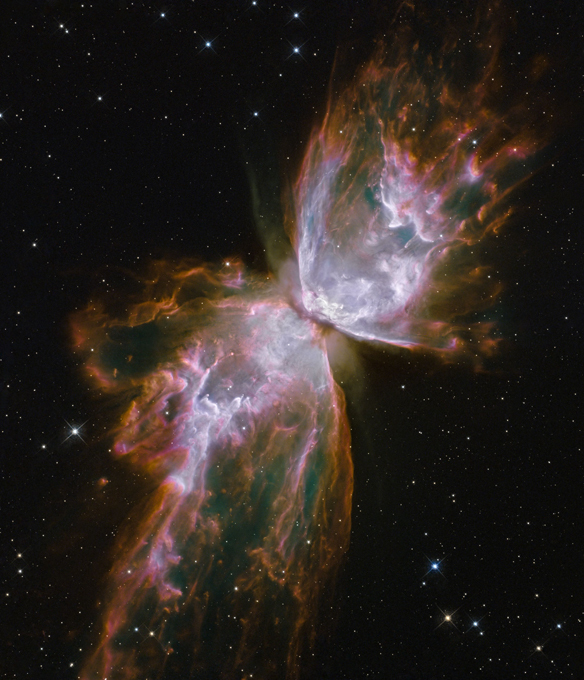
The Engraved Hourglass Nebula (also known as MyCn 18) is a young planetary nebula situated in the southern constellation Musca about 8,000 light-years away from Earth. It was discovered by Annie Jump Cannon and Margaret W. Mayall during their work on an extended Henry Draper Catalogue (the catalogue was built between 1918 and 1924). At the time, it was designated simply as a small faint planetary nebula.
The Engraved Hourglass Nebula (also known as MyCn 18) is a young planetary nebula situated in the southern constellation Musca about 8,000 light-years away from Earth. It was discovered by Annie Jump Cannon and Margaret W. Mayall during their work on an extended Henry Draper Catalogue (the catalogue was built between 1918 and 1924). At the time, it was designated simply as a small faint planetary nebula.

A dwarf galaxy is a small galaxy composed of up to several billion stars, a small number compared to the Milky Way's 200-400 billion stars. The Large Magellanic Cloud, which closely orbits the Milky Way and contains over 30 billion stars, is sometimes classified as a dwarf galaxy; others consider it a full-fledged galaxy. Dwarf galaxies' formation and activity are thought to be heavily influenced by interactions with larger galaxies
A dwarf galaxy is a small galaxy composed of up to several billion stars, a small number compared to the Milky Way's 200-400 billion stars. The Large Magellanic Cloud, which closely orbits the Milky Way and contains over 30 billion stars, is sometimes classified as a dwarf galaxy; others consider it a full-fledged galaxy. Dwarf galaxies' formation and activity are thought to be heavily influenced by interactions with larger galaxies
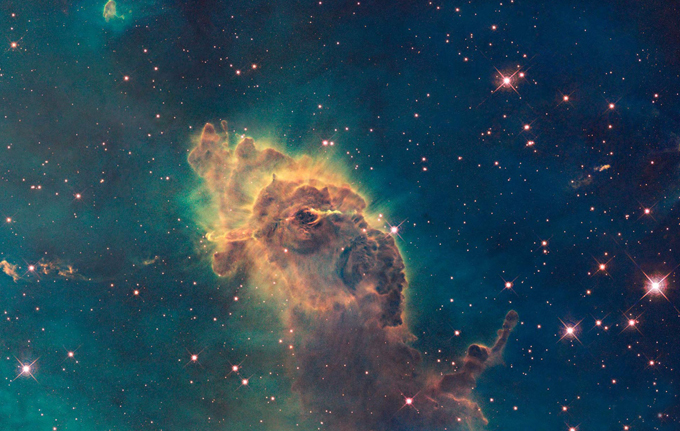
The Carina Nebula (also known as the Great Nebula in Carina, the Eta Carinae Nebula, NGC 3372, as well as the Grand Nebula) is a large complex area of bright and dark nebulosity in the constellation of Carina, and is located in the Carina-Sagittarius Arm. The nebula lies at an estimated distance between 6,500 and 10,000 light years from Earth
The Carina Nebula (also known as the Great Nebula in Carina, the Eta Carinae Nebula, NGC 3372, as well as the Grand Nebula) is a large complex area of bright and dark nebulosity in the constellation of Carina, and is located in the Carina-Sagittarius Arm. The nebula lies at an estimated distance between 6,500 and 10,000 light years from Earth
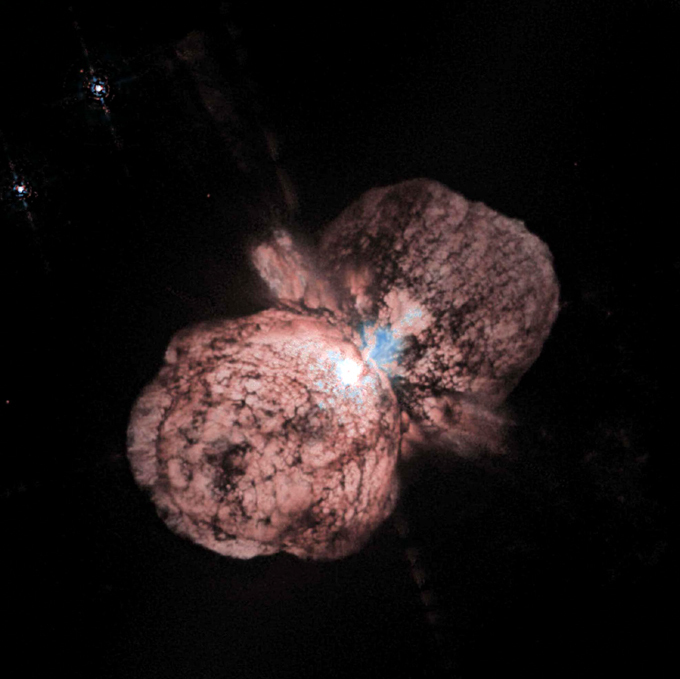
NGC 604 is an H II region inside the Triangulum Galaxy. It was discovered by William Herschel on September 11, 1784. It is one of the largest H II regions in the Local Group of galaxies; at the galaxy's estimated distance of 2.7 million light-years its longest diameter is roughly 1500 light years (460 parsecs), over 40 times the size of the visible portion of the Orion Nebula. It is over 6300 times more luminous than the Orion Nebula, and if it were at the same distance it would outshine Venus
NGC 604 is an H II region inside the Triangulum Galaxy. It was discovered by William Herschel on September 11, 1784. It is one of the largest H II regions in the Local Group of galaxies; at the galaxy's estimated distance of 2.7 million light-years its longest diameter is roughly 1500 light years (460 parsecs), over 40 times the size of the visible portion of the Orion Nebula. It is over 6300 times more luminous than the Orion Nebula, and if it were at the same distance it would outshine Venus

